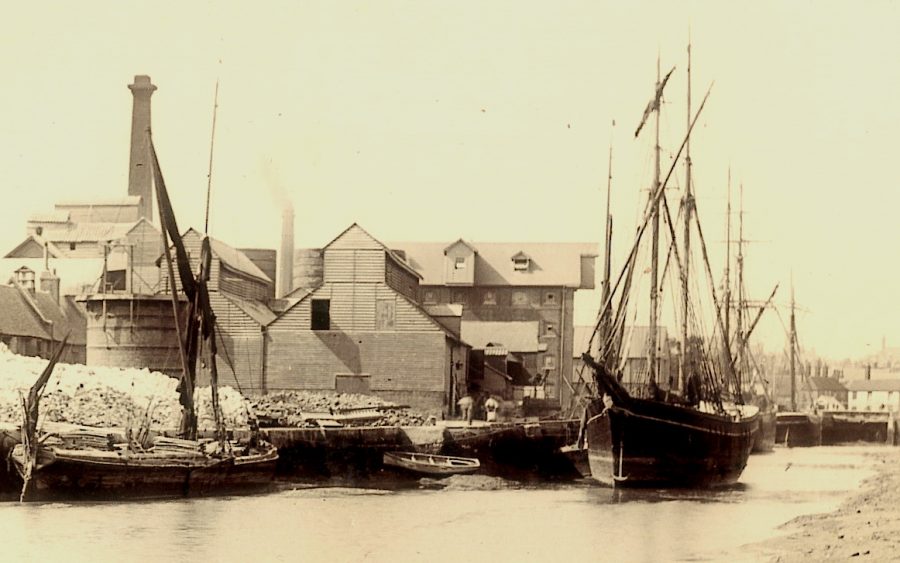How a sluice installed at the head of the Creek in 1558 transformed its fortunes we learnt in Part 4. Its operation cleared the waterway of mud and silt, enabling the big vessels of the day to load and discharge cargoes close to the town centre rather than at Thorn Creek, a mile away to the north.
In the words of William Lambarde, writing just 12 years later, “this town flourisheth in wealth, for it hath not only the neighbourhood of one of the most fruitful parts of this shire (or rather, of the very garden of Kent) adjoining by land, but also a commodious Creek, that serveth to bring in and carry out by the water, whatsoever wanteth or aboundeth to the country about it.”
And so, thanks largely to its Creek, the town continued to prosper for the next 250 years and more. Edward Hasted, the great Kent historian, gave the port a positive health-check. “Constant attention has always been paid to the preservation and improvement of the navigation of this creek, by the corporation, who take the whole expense of it on themselves.” The necessary funds they found by the imposition of ‘droits’ (tolls) on cargoes discharged at the various quays. Their right to do so was challenged in 1764, but upheld in court.
Hasted went on to describe the port’s trade. “The principal shipping trade is now carried on from this port by six hoys, which go alternately every week to London with corn, amounting in very plentiful years to 40,000 quarters of different sorts yearly.”
“Colliers likewise, of one hundred tons burthen, which supply not only the town but the neighbouring country with coals, and larger vessels, which import fir timber and iron from Polish Prussia, Norway, and Sweden, frequently resort hither, the principal proprietors and merchants concerned in them being inhabitants of this town. Besides which, there are several fishing vessels, and others, employed in carrying wool, fruits, and other traffic to London and other parts.”
There was also the oyster fishery. It supported over 100 families in the town. Faversham oysters were great favourites of the Dutch, who “have, time out of mind, kept up a constant traffic here for them, never dealing with any others, whilst they can purchase here those suitable for their consumption, at an equal price to those of the adjoining grounds, and generally laying out upwards of £3,000 [in today’s money £100,000] annually for them.”
However, “as these beds do not afford native oysters sufficient for the demands made for them, large quantities of small ones, called brood, are annually laid on these shores. These are collected from different parts of the sea, even from the Land’s End in Cornwall to Scotland and France, in order to increase and fatten, and be meliorated of their saltness, by the constant flow of the fresh waters from the Thames and the Medway.”
So far, except at Standard Quay, Town Quay and Ordnance Wharf, the flood-prone banks of the Creek lay mostly undeveloped. In 1812 the situation changed when Samuel Shepherd, of the brewing family, built a cement works at King’s Head Quay.

Seen here as it was about 115 years ago, this was one of the first of its kind in the UK. It took advantage of the ‘Roman cement’ developed by James Parker in the 1780s and patented in 1796. Part of Provender Walk now occupies the site.
This reproduced no original Roman product, but exploited the potential of the ‘septaria’ nodules found locally in the London Clay. Containing both clay and chalk, these could be burnt and then ground to a fine powder which, when mixed with sand, made an excellent mortar.
King’s Head Quay, where part of Provender Walk now stands, took its name from an old pub which was demolished in 1849 when the works was updated. Its name was transferred to a pub in Abbey Street, formerly known as The Mermaid and then The Smack. This is now No 14, and Smack Alley, alongside it, takes its name from the pub’s old dedication.